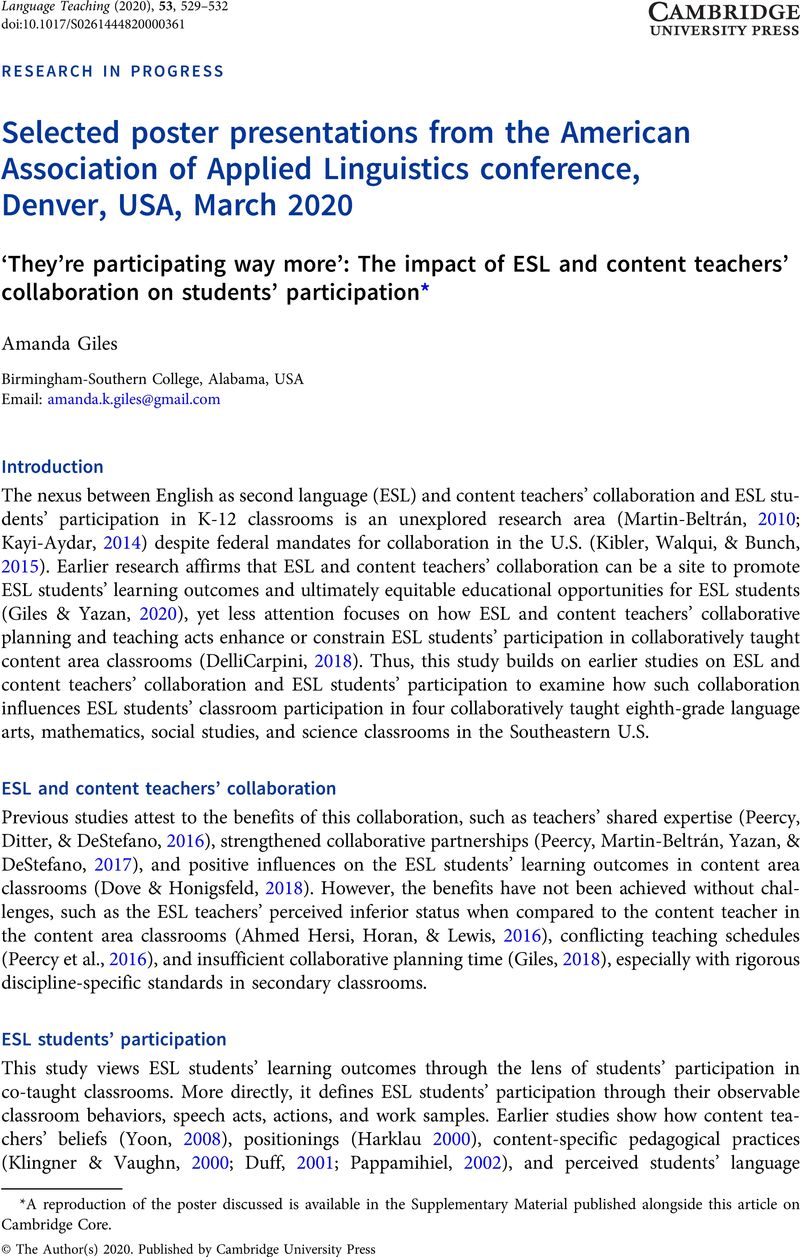Crossref Citations
This article has been cited by the following publications. This list is generated based on data provided by Crossref.
Early, Margaret
Ferreira, Jonathan
Kendrick, Maureen
and
Lucci, Giovanna
2025.
Understanding the conditions that foster collaborative teacher cultures: A case study.
System,
Vol. 131,
Issue. ,
p.
103652.




